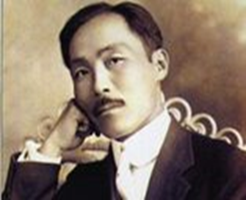About Lesson
Lesson 2: The First Koreatown and the Legacy of Dosan Ahn Chang Ho

Ahn Chang Ho, Kap Suk Cho, and other workers at an orange orchard in Riverside, CA, in early 1900s.
(Source: Courtesy of Korean Heritage Library, University of Southern California)
Lesson Features
-
- TOPICS: Establishment of the First Koreatown in Riverside, Pachappa Camp, Korean Independence Movement, California Citrus Industry
- HISTORICAL TIME FRAME: 1900 – 1940
- NOTABLE KOREANS: Dosan Ahn Chang Ho (1878 – 1938)
- SUMMATIVE ASSESSMENT: Civic Engagement Project and Report
Lesson Overview
-
- Students explore the life of Dosan Ahn Chang Ho, his immigration to the United States, and his life as an activist and community builder. They examine how the first Koreatown was established in Riverside, California, and compare the experiences of Korean, Mexican, and women citrus pickers and packers. Finally, they identify Dosan’s contributions to the United States and to Korea.
Time Frame
-
- Activity 2 requires 55 minutes plus additional time for student research and sharing.
- The Summative Assessment civic engagement project requires 55 minutes and homework.
Objectives and Learning Goals
-
- Students will be able to identify important events in the life of Dosan Ahn Chang Ho, including his immigration to the United States, and his life as an activist and community builder.
- Students will be able to describe how the first Koreatown was established in Riverside, California, and compare and contrast the experiences of Korean, Mexican, and women citrus pickers and packers.
- Students will be able to evaluate Dosan’s contributions to the United States and to Korea.
Vocabulary
-
- Pachappa Camp – founded in 1905 and is considered to be the first Korean settlement established in the United States. Located in downtown Riverside, California.
- Famine – extreme scarcity of food.
- Korean National Association – political organization established in 1909 to fight Japan’s colonial policies and occupation in Korea.
- Gongnip Hyophoe – also known as “Cooperative Association,” these were designed to develop democratic policies and institutions for the future founding of a democratic and independent Korean nation.
- Korean Labor Bureau (KLB) – a Labor Bureau opened by Dosan to facilitate employment and help bring Koreans to Riverside.
- Deportation – the action of deporting a foreigner from a country.
- Korean Provisional Government – a partially recognized Korean government-in-exile based in Shanghai, China, and later in Chongqing, during the Japanese colonial rule of Korea.
Original Resource
-
- Chang, E. & Kwon, H. (2022). Early Korean Immigrants and the Legacy of Dosan Ahn Chang Ho. In G. Cho & V. Costa (Eds.). Korean American Ethnic Studies Curriculum: Teaching Resource Materials for K-12 Classrooms (pp.45-110). Consulate General of the Republic of Korea in Los Angeles.
Lesson 2 Presentation (PDF)
Lesson 2 Teacher’s Guide (PDF)
Download Lesson 2 Presentation (PPT)

